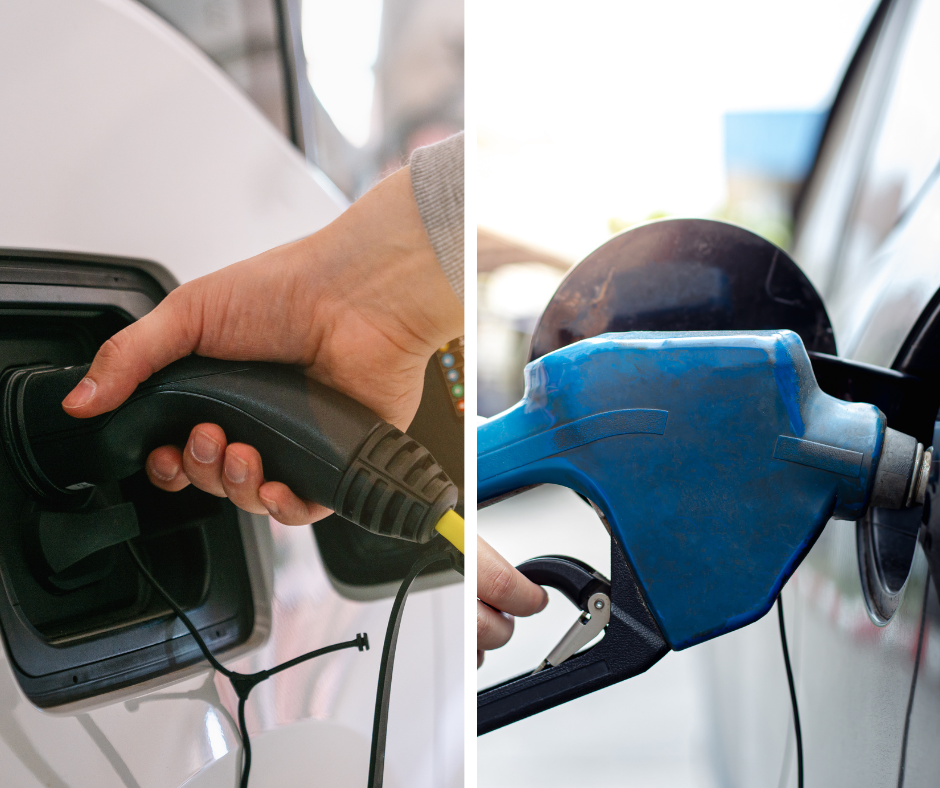Even though electric vehicles (EVs) are quickly becoming more popular, many indicators show that gas and diesel-powered cars will remain the dominant vehicles on the roads for many years.

Consumers Still Reluctant to Purchase an Electric Vehicle
Electric car sales haven’t taken off yet, despite current automaker trends. According to a Bloomberg report, only four percent of current US car production is electric. At the outset, their vehicle design appeals to consumers who are environmentally conscious, but that hasn’t been enough to convince the majority of people to make a purchase.
According to information provided by the Alternative Fuels Data Center, EV sales only account for three percent of overall car sales. In addition, only two percent of Americans today own an electric vehicle.
There are several key reasons why car owners may hesitate to purchase an electric vehicle. Consider the rationale below.
Gas Prices
Gas prices can indeed take an upswing due to global supply issues. However, even though pump rates can go up for a while, fuel prices also tend to go down quickly after reaching their peak.
Some have observed that gas prices still haven’t reached a certain level to convince the general public to switch to an EV. Further, the cost of owning gas-powered cars must be higher than an electric car to change people’s minds.
Vehicle Price
The prevailing market price of an EV is another factor that may cause the general public shy away from purchasing them. For example, the average price for an EV is around $65,000, but the Tesla Model X goes for a whopping $120,000 (Investopedia, 2022).
Compare that to the average price of a compact SUV of $35,248, while a brand new full-size car costs $45,333. Classic cars, on the other hand, have an average sale price of $31,000. This price crunch still makes gas powered cars more attractive to the average consumer.
Several experts believe that the price point of electric cars is the biggest factor that holds people back, preventing their wide acceptance.
Replacement Batteries
One of the selling points in the vehicle design of an electric car is that you no longer have to spend money on gas. The idea of gas savings was designed to attract the people’s attention, but it’s not enough to convince consumers to make the switch.
EV automakers still have to work out the technology behind the batteries that power these cars. And these batteries aren’t cheap! They can cost from $500 to $1,000 for a single replacement.
Tesla and other automakers have advertised that EV batteries are designed to last longer — around two to three years on average. However, it still depends on how frequently you drive the electric car. Driving it too frequently and more aggressively means the battery will wear out quicker, resulting in a lifespan of only a little over a year. In these instances, EV owners will need to purchase replacement batteries sooner than expected.
Vehicle Design Issues
Another factor holding consumers back is the design and style of electric-powered cars. When you look at how automakers designed the Renault Twizy and the Nissan Leaf, you can get second thoughts about buying them. But they’re not the worst-designed EVs. Case in point: try to Google Corbin Sparrow.
The Tesla Cybertruck’s design has too many angles, taking on a more rectangular design. But that’s not the only thing that consumers questioned. The marble-looking interiors of this car have failed to attract its intended audience.
However, the designs are improving, with new models looking more trendy and mainstream. For instance, Tesla’s Model 3 represents a significant improvement.
Maintenance Costs
Battery replacement isn’t the only cost you will incur if you want to maintain an electric car. For example, after purchasing an EV, your garage should be outfitted with a battery charging station. In most regions, new equipment installation costs start at $2,500. This issue can be a challenge for cost-conscious consumers.
Charging Time
The time to recharge an EV’s battery is still another issue for consumers. It only takes a minute or less to fill your car with gas, but it can take several hours to recharge an electric vehicle’s battery.
Range
Another significant issue for consumers is an EV’s range. Given its current state of technology, many EVs today can drive 50 to 90 miles on a single charge. That may be sufficient if you live close to where you work, but if you have to drive further or run additional errands during your daily drive, that range can become a problem.
Environmental Issues
One of the common reasons why people desire to purchase an electric car is to help protect the environment. However, most electric grids today still rely on fossil fuels; the power source for an EV will come from coal and other non-renewable energy sources. This factor may come as a surprise for consumers, given the current marketing around EVs.
Doing Your Part for the Environment
The technology behind EVs is still in its infancy, which means we will see their prices, maintenance costs and their environmental impact get better with further development. Nevertheless, automobile owners can still do their part for the environment — even when they don’t own an electric vehicle. For instance,
1) you can choose maintenance supplies that can help reduce a car’s carbon footprint, or
2) you can grab eco-friendly products to “go green” and reduce exposure to dangerous fumes and chemicals.
With more durability, less toxicity and increased safety for the environment, (including people and wildlife), eco-friendly supplies from Berryman Products will meet your car needs while keeping everyone out of harm’s way. From fuel additives and lubricants to cleaning products, we’ve got you covered.
Contact a specialist at Berryman Products today to get more information.
